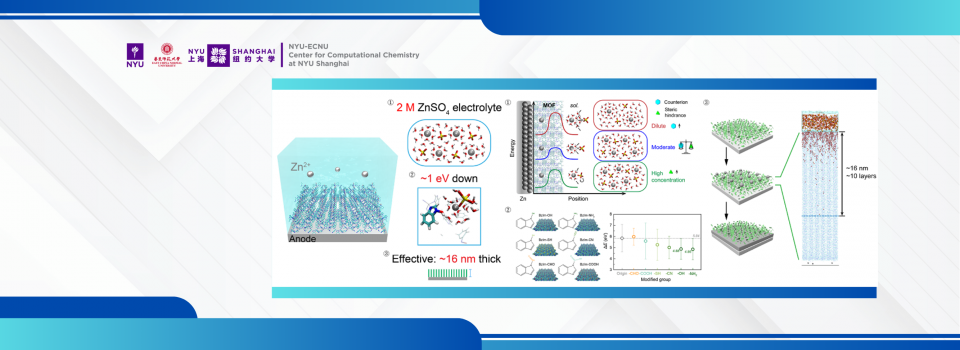Nov 13 2023
Published by
NYU Shanghai

Functional porous coating on zinc electrodes is emerging as a powerful ionic sieve to suppress dendrite growth and side reactions, thereby improving highly reversible aqueous zinc ion batteries. However, the ultrafast charge rate is limited by the substantial cation transmission strongly associated with dehydration efficiency. In a recent study, Professor Xiao He's team unveiled the entire dynamic process of solvated Zn2+ ions’ continuous dehydration of electrolytes
Journal Reference:
Jiang, Y., Wan, Z., He, X., and Yang, J. Fine-tuning electrolyte concentration and metal–organic framework surface toward actuating fast Zn2+ dehydration for aqueous Zn-ion batteries. Angew Chem. 62, e202307274 (2023)
>> To read the article in Chinese at East China Normal University, click here.


